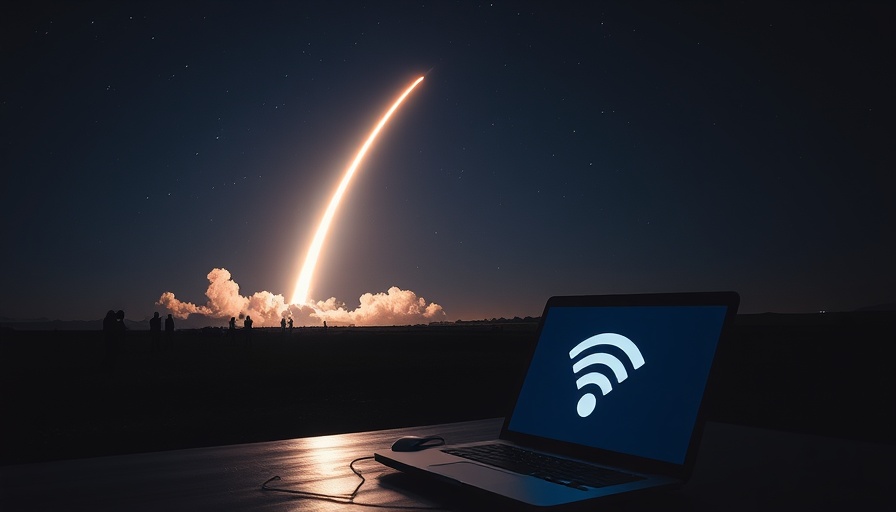
Another Successful Launch for SpaceX
In a night illuminated by the full moon, SpaceX successfully launched 21 Starlink satellites on April 12 from Kennedy Space Center in Florida. The Falcon 9 rocket lifted off at 8:53 a.m. EDT, marking a significant milestone in SpaceX's ongoing mission to expand its internet services. With the growing network now including over 7,000 satellites, this launch underlines SpaceX's commitment to providing low-latency, high-speed internet connectivity worldwide.
Boosting Connectivity with 21 New Satellites
This mission, known as Starlink 12-17, saw the Falcon 9's first stage, designated B1083, separate roughly 2.5 minutes after liftoff. The booster successfully landed on the droneship 'A Shortfall of Gravitas' in the Atlantic Ocean, demonstrating SpaceX’s reusable rocket technology, a pioneering approach that reduces the costs of space launches. The upper stage of the Falcon 9 continued its ascent, delivering the new satellites into low Earth orbit.
Innovative Technology Behind Starlink's Success
Among the 21 satellites launched, 13 feature SpaceX's new Direct to Cell technology. This innovative system aims to eliminate cellular dead zones, enhancing mobile connectivity. The partnership with T-Mobile marks a significant step towards integrating satellite technology into everyday communication. This means that even in areas with limited or no cellular service, users can access reliable internet connectivity directly through their mobile devices.
A Growing Megaconstellation Expanding Our Connectivity
The Starlink network is rapidly transforming global internet access. Unlike traditional satellite systems that often provide sluggish connections, Starlink’s framework offers users speeds comparable to terrestrial broadband. As the network expands, more users stand to gain high-speed internet access regardless of their geographic location.
SpaceX's 41st Falcon 9 Mission of 2025
Saturday’s launch was one among a total of 41 Falcon 9 missions in 2025, with 28 dedicated to bolstering the Starlink network. This fast-paced evolution highlights the tech giant’s strategic push towards a comprehensive global internet service. The accumulation of satellites in LEO is instrumental in achieving a consistent and expansive network coverage, reinforcing the case for satellite internet as a viable alternative in underserved areas.
What Lies Ahead for SpaceX and Satellite Technology?
SpaceX's continuous advancement in satellite technology raises questions about future possibilities. The integration of more advanced technologies could lead to further enhancements in internet speeds and coverage. Furthermore, as satellite internet becomes more commonplace, discussions surrounding regulation, safety, and sustainability will come to the forefront.
Ultimately, this latest launch serves as a reminder of the rapid advancements in space technology and its potential to transform everyday life. As SpaceX continues to launch more satellites, the conversations surrounding the implications of such innovations will be essential.
 Add Row
Add Row  Add
Add 




Write A Comment